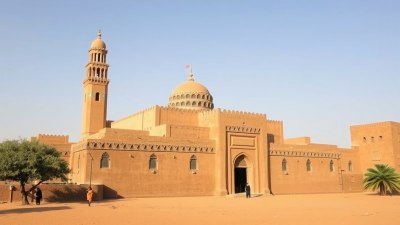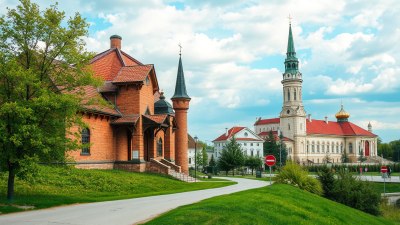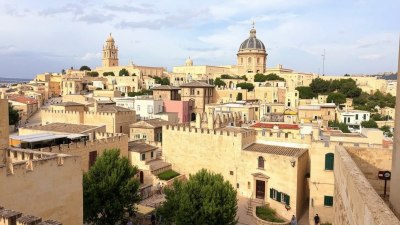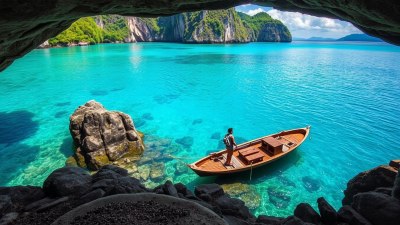The Places That Don’t Want to Be Found
Discover secret locations around the world that remain hidden from the public eye.
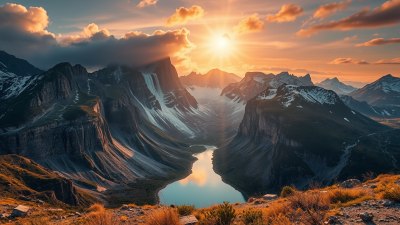
Image created with Flux Schnell
Across our beautiful planet, there are countless destinations that captivate the imagination and ignite the spirit of adventure. However, some places not only captivate but also conceal themselves from the public eye, either by design or circumstance. These are the places that don’t want to be found, each housing tales of mystery, folklore, and stark beauty, known only to a select few.
In a world so interconnected, it is fascinating to explore locations that remain elusive. Some of these spots are protected by their remote geography, while others are kept secretive due to political or cultural reasons. Let’s delve into some of these hidden gems that maintain a societal allure while standing apart from the crowds.
1. North Sentinel Island, India
North Sentinel Island is perhaps one of the most infamous 'no-go' zones on Earth. Located in the Andaman and Nicobar Islands, this island is home to the Sentinelese people, one of the last uncontacted tribes in the world. The Indian government has imposed a strict ban on visiting the island, primarily to protect its inhabitants from external diseases and cultural disruptions. The Sentinelese people have a history of rejecting contact with outsiders, often attacking upon approach. This has created an aura of mystery and intrigue around the island, igniting public curiosity while simultaneously stressing the importance of preserving indigenous cultures.
2. Area 51, Nevada, USA
Area 51, situated in the Nevada desert, is synonymous with conspiracy theories and classified military projects. Officially known as the Nevada Test and Training Range, this highly restricted area has fueled decades of speculation surrounding alien life and advanced technology. The U.S. government’s secrecy regarding the site has led to a plethora of theories about what occurs within its fences. While some assert it is merely a testing site for experimental aircraft, others believe it harbors extraterrestrial artifacts. Despite its notoriety, little is known for sure, keeping the public intrigued.
3. Bouvet Island, Norway
Bouvet Island is a small, uninhabited island in the South Atlantic Ocean, known for its harsh weather conditions and remoteness. Claimed by Norway, it is often regarded as one of the most remote islands in the world. With its rugged terrain, volcanoes, and ice, Bouvet Island is not an inviting destination. The island serves primarily as a scientific research site, and restricted access keeps it from attracting tourists. Its isolation and lack of human presence only enhance the enigmatic nature of this barren land.
4. The Zone of Silence, Mexico
La Zona del Silencio, or the Zone of Silence, is a small area in Durango, Mexico, where radio signals reportedly don’t work. Located between the Bolivian desert and the ancient cave systems of the oscura mountains, the zone mysteriously defies the laws of physics, leading to legends surrounding UFO sightings and extraterrestrial encounters. Although it is technically not a restricted area, the difficulty of reaching it and its sparse population makes it rarely visited. Here, science meets superstition, and the unknown reigns supreme.
5. The Door to Hell, Turkmenistan
Narrating an extraordinary tale of geological misadventure, the Door to Hell, or Darvaza Gas Crater, located in Turkmenistan, continuously burns with a surreal fire. Discovered in 1971, the crater was created when a Soviet drilling rig collapsed into a cavern of natural gas. To prevent the spread of methane gas, geologists deemed it best to light it on fire, expecting it to burn for a few days. Over four decades later, it still smolders, creating an ethereal glow in the desert. This remote location has drawn adventurous travelers, yet due to its inaccessibility, it remains obscure.
6. Ise Grand Shrine, Japan
The Ise Grand Shrine, one of Shinto's holiest sites, lies hidden in the forests of Japan’s Mie Prefecture. Every twenty years, the shrine is rebuilt, symbolizing renewal. While it is considered sacred, only those with the utmost respect for tradition are allowed inside its inner sanctum, making it a mysterious destination even among the Japanese populace. The deep-rooted customs and spiritual significance create a serene haven, separated from the hustle and bustle of the modern world. The forest surrounding the shrine is also revered, filled with ancient friendships between nature and humanity.
7. The Catacombs of Paris, France
Below the lively streets of Paris lie the Catacombs, an eerie and fascinating subterranean maze filled with the remains of over six million Parisians. The Catacombs were originally intended to alleviate the overflow of cemeteries in the late 18th century. Though a popular tourist attraction, much of the catacombs remain unexplored and sealed off. The ambiance is haunting, yet the historical narratives preserved within the limestone bones offers a chilling glimpse into the past. Many areas of the catacombs remain undiscovered, waiting for the next urban explorer seeking the next hidden treasure.
8. The Svalbard Global Seed Vault, Norway
The Svalbard Global Seed Vault is often referred to as the 'doomsday vault,' protecting the world’s agricultural biodiversity. Located in the Arctic Circle, this high-security facility is designed to withstand global catastrophes, housing thousands of seed varieties from around the globe. Constructed into a mountainside, it remains one of the most secretive places due to its crucial role in preserving food diversity. While scientists and researchers know of its existence, access is highly restricted, echoing the urgency to safeguard future generations and scientific heritage.
9. Mount Roraima, Venezuela
Rising majestically on the border of Venezuela, Brazil, and Guyana, Mount Roraima is a geological marvel, often shrouded in mist and mystique. This flat-topped mountain is part of the Pakaraima chain and is home to unique ecosystems that exist nowhere else on Earth. The indigenous Pemon people consider Mount Roraima sacred, and access to the summit is often limited, with specific guided tours required to preserve local customs. This remoteness adds to its allure, drawing in only the most adventurous souls willing to trek through thick jungles and unpredictable weather for a taste of its wonders.
10. Oymyakon, Russia
Known as one of the coldest inhabited places on Earth, Oymyakon in Siberia, Russia, is a town located where extreme temperatures can drop below -50 degrees Celsius. Its inhospitability makes it less appealing for tourists, leading to its hidden status. Despite its frigid façade, local residents have courageously claimed their home, adapting to extreme conditions with remarkable resilience. Oymyakon is a testament to human endurance amid harsh climates, where ice reigns supreme, unexplored by those seeking temperate pleasantries.
11. Socotra Island, Yemen
Dubbed the 'Galápagos of the Indian Ocean,' Socotra Island boasts an astonishing array of plant life, with around one-third of its flora found nowhere else on Earth. This UNESCO World Heritage site is cut off from the mainland, resulting in its plants evolving uniquely over millennia. Accessibility is limited, particularly due to political conflicts in the region, and travelers are required to navigate carefully to experience the island's distinct landscapes and ecosystems. The island's isolation has allowed it to retain its identity, holding secret allure for botanists and nature enthusiasts.
12. The Great Blue Hole, Belize
A diver's dream, the Great Blue Hole is a massive underwater sinkhole off the coast of Belize, attracting adventurous explorers fascinated by its depth and vibrancy. While it is a popular diving destination, only a limited number of tourists manage to experience its full wonders due to logistics and expense. The hole, part of the Belize Barrier Reef, reveals an extraordinary marine ecosystem teeming with life. For those seeking the thrill of delving Below, it remains a coveted destination that retains an element of exclusivity and mystery.
13. The Lost City of Petra, Jordan
Carved into rose-red cliffs, Petra is an ancient city and UNESCO World Heritage site that was lost to the world for centuries, known as the Rose City. It is surrounded by mystery and intrigue, with many areas still yet to be uncovered. While it has gained popularity, the site’s vastness means numerous sections remain undiscovered. Guided tours often take travelers through specific routes, preserving the site’s integrity, hence ensuring the lost essence of ancient mysteries that lies hidden out of view. Its historical and cultural significance adds to the curiosity surrounding it.
The world is littered with hidden treasures, destinations that evoke mystery and pride. Places that don’t want to be found offer solace for those who appreciate the unseen beauty of our world. As we explore these locations, it remains our duty to honor and respect their uniqueness, understanding that some wonders exist beyond our reach, intentionally hidden from the hustle and bustle of human society. Without a doubt, the allure of the enigmatic only enhances their charm, turning these locales into treasure troves of stories waiting to be told.
